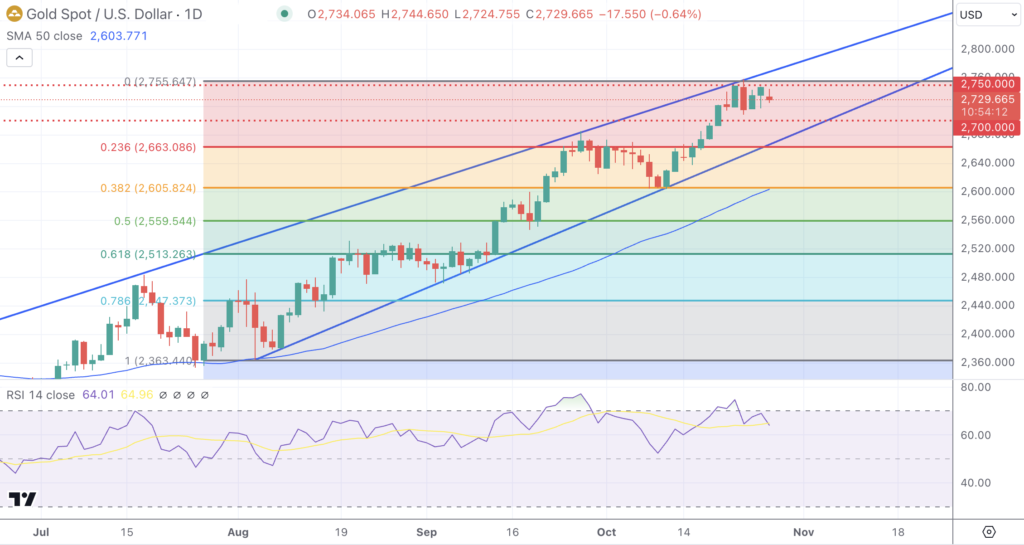Key Takeaways
- Gold faces resistance at $2,750, with support near $2,700.
- Geopolitical tensions and inflation concerns are supporting safe-haven demand.
- U.S. economic data and Fed policy signals will be critical for gold’s outlook.
- Rising Treasury yields and a strong dollar may limit upside potential, though global risks could provide a boost.
Market Dynamics and Recent Performance
Gold (XAU/USD) has been trading near its peak levels close to $2,750, fueled by high safe-haven demand amid ongoing Middle East tensions and rising inflation fears. This price level is critical, as it reflects investor caution driven by heightened geopolitical risks and economic anticipation surrounding U.S. GDP and inflation reports. The robust U.S. dollar and rising Treasury yields, however, present strong counterweights to further upside, contributing to gold’s tentative trading behavior near these highs.
Technical and Fundamental Influences
Technically, gold remains in a solid uptrend, with a key resistance zone around $2,750 and support near $2,700. The recent price action indicates a potential consolidation at current levels, with $2,750 marking a significant hurdle that, if surpassed, could allow a test of $2,800. However, if gold fails to breach this resistance, a correction may set in, targeting $2,700 or even $2,680 if the broader sentiment weakens.
Gold’s Relative Strength Index (RSI) has been approaching overbought territory, suggesting a cooling period could be imminent if fresh buying fails to materialize. The price has largely respected the upward trendline established in recent months, keeping it above both the 50-day and 200-day moving averages, which continue to offer firm support to the underlying bullish structure. Additionally, Fibonacci retracement levels highlight $2,750 as a key level; should prices close above this line, gold may attract renewed interest from technical traders aiming for breakout-driven gains.

On the fundamental side, market attention will remain on how the Federal Reserve balances inflationary pressures with growth objectives. The Fed’s cautious tone around inflation could lead to more dovish positioning if economic indicators show weakness, which would likely strengthen gold. However, persistent strength in the dollar due to yield appeal could counteract some safe-haven inflows, especially if Treasury yields remain elevated.
Looking Forward
Next week, the U.S. GDP report and inflation data will be focal points for the gold market. If economic data implies that the Fed may continue its hawkish stance, gold could struggle to break past $2,750 and may see downward pressure. Conversely, any dovish cues from economic weakness or escalating global risks could lift gold towards $2,800 and beyond. Gold’s trajectory will remain sensitive to the balance between dollar strength and global risk appetite, making it a critical week for price action.

